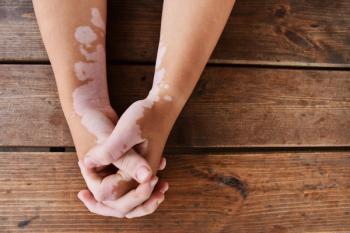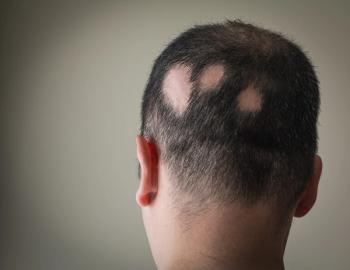
- Consultant for Pediatricians Vol 6 No 4
- Volume 6
- Issue 4
Milia
The pearly papules on the cheeks (A), ear, and scalp (B) of 2 newborns are classic presentations of milia. The white or yellow papules range from 1 to 2 mm in diameter. They result from retained keratin and sebaceous material in pilosebaceous skin. The lesions commonly affect the face and may be present at birth or develop within the first few days of life.
The pearly papules on the cheeks (A), ear, and scalp (B) of 2 newborns are classic presentations of milia. The white or yellow papules range from 1 to 2 mm in diameter. They result from retained keratin and sebaceous material in pilosebaceous skin. The lesions commonly affect the face and may be present at birth or develop within the first few days of life.
Milia require no treatment and usually spontaneously regress by the age of 3 months. Well-meaning mothers may apply oils or lotions to the lesions, which can worsen the condition by further plugging the pilosebaceous glands. The mother of the infant in photo A had applied baby lotion to the lesions for about a week. She was advised to wash her infant's face with water only and to discontinue the lotion application. *
Articles in this issue
over 18 years ago
Boy With Rash on Hands and Feetover 18 years ago
Wheeze in Preschool Children:over 18 years ago
When a Parent Asks About HPV Infection...over 18 years ago
Case In Point: Aberrant Left Coronary Arteryover 18 years ago
Sunflower Seed Ingestionover 18 years ago
Erythema Infectiosum and Acropustulosis of Infancyover 18 years ago
Child With Bullous Lesion on Left Side of Groinover 18 years ago
Erythema Multiforme or Urticaria?over 18 years ago
Osteoid Osteoma in a TeenagerNewsletter
Access practical, evidence-based guidance to support better care for our youngest patients. Join our email list for the latest clinical updates.














